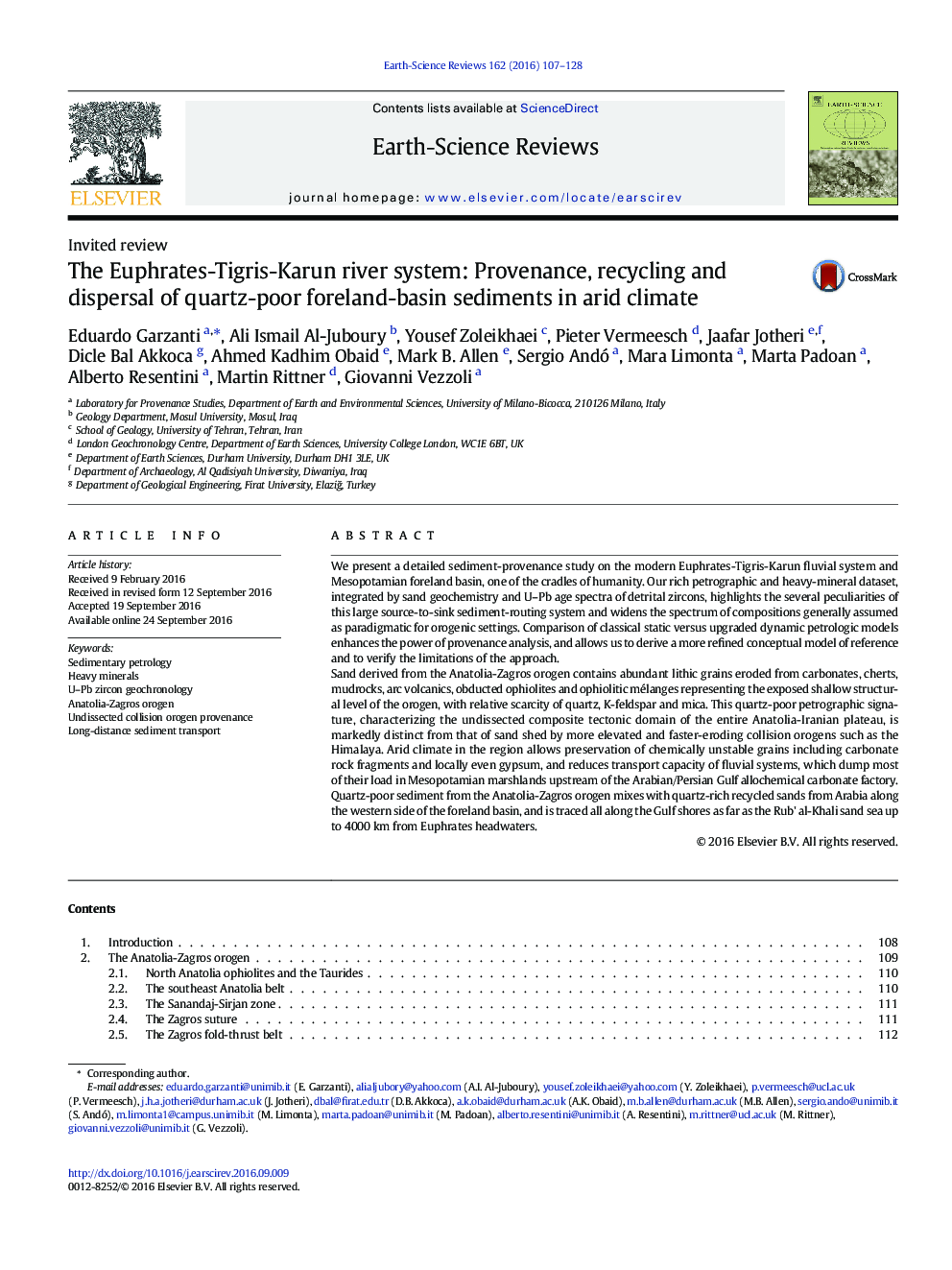| Article ID | Journal | Published Year | Pages | File Type |
|---|---|---|---|---|
| 6442761 | Earth-Science Reviews | 2016 | 22 Pages |
Abstract
Sand derived from the Anatolia-Zagros orogen contains abundant lithic grains eroded from carbonates, cherts, mudrocks, arc volcanics, obducted ophiolites and ophiolitic mélanges representing the exposed shallow structural level of the orogen, with relative scarcity of quartz, K-feldspar and mica. This quartz-poor petrographic signature, characterizing the undissected composite tectonic domain of the entire Anatolia-Iranian plateau, is markedly distinct from that of sand shed by more elevated and faster-eroding collision orogens such as the Himalaya. Arid climate in the region allows preservation of chemically unstable grains including carbonate rock fragments and locally even gypsum, and reduces transport capacity of fluvial systems, which dump most of their load in Mesopotamian marshlands upstream of the Arabian/Persian Gulf allochemical carbonate factory. Quartz-poor sediment from the Anatolia-Zagros orogen mixes with quartz-rich recycled sands from Arabia along the western side of the foreland basin, and is traced all along the Gulf shores as far as the Rub' al-Khali sand sea up to 4000Â km from Euphrates headwaters.
Related Topics
Physical Sciences and Engineering
Earth and Planetary Sciences
Geology
Authors
Eduardo Garzanti, Ali Ismail Al-Juboury, Yousef Zoleikhaei, Pieter Vermeesch, Jaafar Jotheri, Dicle Bal Akkoca, Ahmed Kadhim Obaid, Mark B. Allen, Sergio Andó, Mara Limonta, Marta Padoan, Alberto Resentini, Martin Rittner, Giovanni Vezzoli,
